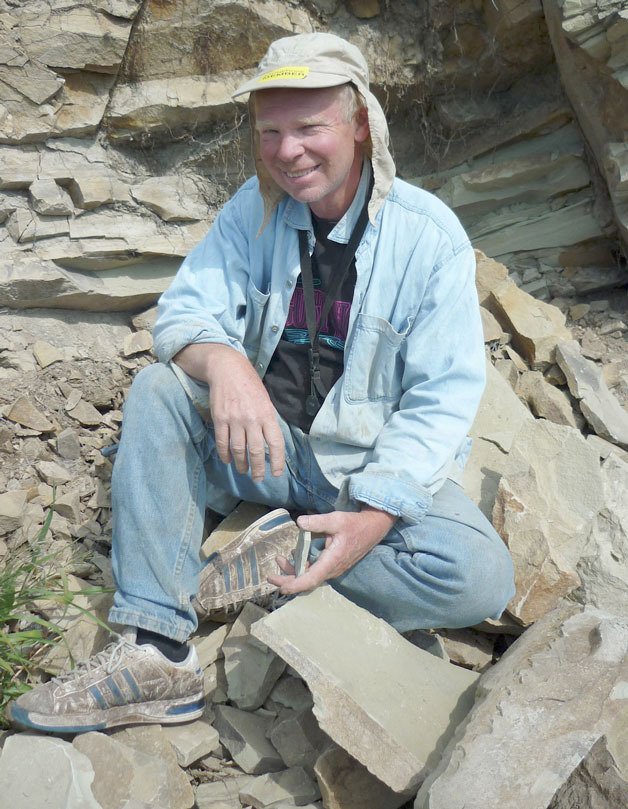A Clinton man will have his name live on forever in the form of a bug’s fossil.
John Elverum of Clinton discovered an insect fossil at the Republic fossil bed. The insect was named Eorpa elverumi.
“Eorpa” stems from the eocene epoch when the insects lived around 50 million years ago.
Elverumi comes from the Elverum’s last name.
“Over the years I have visited the Stonerose Museum at Republic and its various fossil sites on countless occasions,” Elverum said in an email. “It is a rare, special opportunity to look for fossils in such a setting and finding a truly scientifically valuable specimen makes those experiences all the more worthwhile.”
Paleontologists said they believe discovery of the extinct family of insects will help them understand how one group of animals responded to global climate change and the evolution of communities.
“The Eocene Apex of Panorpoid Family Diversity,” a paper by Simon Fraser University’s Bruce Archibald and Rolf Mathewes, along with David Greenwood from Brandon University, was recently published in the Journal of Paleontology.
The fossils were found in British Columbia and Washington state, including numerous well-preserved specimens from Republic, at the fossil beds of the internationally known Stonerose Interpretive Center.
The 49 million-year-old fossil beds at Republic continue to gain international attention as a significant window into the ancient forests of the deep past.
“With this new group of scorpionflies, we’ve learned more about how animal species were affected in the deep past as new groups emerged in their communities and also as climate changed,” Archibald said in an email. 
“A glance at a forest today infested with the mountain pine beetle immediately tells us how important it is to more fully understand climate change and its affect on natural communities, and these ancient insects help us to do that.”
Elverum is one of many who make the trek each year to Republic to visit the Stonerose beds. The area draws nearly 9,000 visitors to Republic annually, continuing to cast an international light on Ferry County and its fossil heritage.
“The role Stonerose plays in bringing together amateur collectors and science is very rewarding to everyone involved,” said Catherine Brown, director of the Stonerose Interpretive Center.
“Our congratulations go out John Elverum,” Brown said.


